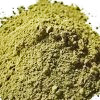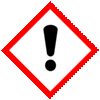Chromium Glycinate or Chromium Amino Acid Chelate Manufacturers, with SDS GHS MSDS Sheet |
Supplier, Manufacturer, Exporter of Chromium Glycinate or Chromium Amino Acid Chelate, Muby Chemicals of Mubychem Group, established in 1976, is the original manufacturers of Specialty Chemicals, Pharmaceutical Excipient, Fragrance Food & Flavor chemicals, Reagent Grade Chemicals, Shale Gas Fracturing Chemicals in India. Mubychem Group has several manufacturing facilities spread across Western India and world wide contacts and toll manufacturers. We are exporting globally to countries like USA, Canada, Europe, UAE, South Africa, Tanzania, Kenya, Egypt, Nigeria, Cameroon, Uganda, Turkey, Mexico, Brazil, Chile, Argentina, Dubai, Korea, Vietnam, Thailand, Malaysia, Indonesia, Australia, China, Germany, France, Italy Portugal, Bangladesh, etc. The products are offered as per required specifications and in correct shape and size in mm or meshs or microns as specified by the buyer. The participating units have one or more accreditations like FDA - cGMP and GLP approval, ISO-9001 Certified, "REACH" Registered, ISO-14001, ISO/IEC 17025, ISO-22000, FSSC 22000, ISO 45001, Kosher Certified, Halal Certified, HACCP, FSSAI. We offer Commercial Pure & IP BP EP Ph Eur USP NF JP FCC Food Grade Analytical Reagent Grades of Chemicals |
| Bookmark this Web Site -- or -- Email This Page Info to a Colleague or Yourself |
Search our website here:







Chromium Glycinate or Chromium Amino Acid Chelate: CAS Number: NA, EINECS EC Number: NA, Molecular Formula: C6H12CrN3O6, Molecular Weight: 274.17, HS Code ---**
How big is your requirement or how small
We serve it all.
Specifications, Safety Data Sheet, Manufacturing process details, Wholesale retail buy sell prices, Uses etc available on line in these pages for Chromium Glycinate or Chromium Amino Acid Chelate.
For SDS MSDS Sheet Click
SDS MSDS Sheet of Chromium Glycinate or Chromium Amino Acid Chelate Manufacturers
Chromium Glycinate
Chromium Amino Acid Chelate Pure Suppliers

Chromium Glycinate or Chromium Amino Acid Chelate is the product resulting from the chelation of Chromium with amino acid glycine. It is poultry and animal nutritional feed supplement used in various formulations to prevent and/or correct chromium deficiency in animals.
General Properties and Specifications of Chromium Glycinate or Chromium Amino Acid Chelate:
Description: A fine, free flowing spray dried dark-greenish powder.
Solubility: Soluble in water with 2% solution clear.
Loss on Drying: 10% w/w maximum.
Total Chromium (Cr): 10% w/w minimum.
Total Nitrogen (N): 6% w/w minimum.
Users may also go for our Mix Mineral Chelate i.e. Mix Mineral Chelate
We manufacture and supply Glycine chemicals as under:
Chromium Ascorbate Aspartate Citrate
Manufacturers:
MUBY CHEMICALS
Ambernath Mumbai, Ankleshwar Gujarat, India
TEL: (OFFICE) +912223770100, +912223726950
Current Date Time in India GMT+5:30
e-mail: info@mubychem.com
USA, Canada, Mexico and other American neighbouring buyers may
e-mail: us@mubychem.com
Call toll-free 1-877-682-9243 (1-877-MUBYCHEM)

Copyright and Usual Disclaimer is Applicable.
Last 22 November, 2025




Exporters to USA Canada UAE Europe South Africa Tanzania Kenya Uganda Egypt Nigeria Turkey Mexico Brazil Argentina Chile Dubai etc.
Global or International Suppliers, Exporters, Importers, Manufacturers
I shall pass through this world, but once. If therefore, there is any good that I can do, or if there is any favor that I can show to a fellow human being, let me do it now. Let me not defer or neglect it. For I shall not tread this way again
Chromium Glycinate or Chromium Amino Acid Chelate GHS SDS, Safety Data Sheet
MSDS Sheet, Material Safety Data Sheet 09-Oct-20
1. Product Identification
Product Name & Other Names: Chromium Glycinate or Chromium Amino Acid Chelate.
CAS No.: NA
Molecular Formula: C6H12CrN3O6
Molecular Weight: 274.17
Relevant uses and uses advised against (if any): Industrial Manufacturing.
Suppliers: As per letterhead.
2. Hazards Identification
GHS, Globally Harmonized System Classification in accordance with 29 CFR 1910
Classification according to Regulation (EC) No 1272/2008
Skin corrosion/irritation Category 2, H315
Serious eye damage/eye irritation Category 2A, H319
Specific target organ toxicity, single exposure; Respiratory tract irritation Category 3, H335
Labelling according to GHS & Regulation (EC) No 1272/2008
GHS Label Elements  Irritant |
Signal Words: Warning
Hazard statements:
H315: Causes skin irritation.
H319: Causes serious eye irritation.
H335: May cause respiratory irritation.
Precautionary statements:
P262: Do not get in eyes, on skin, or on clothing.
P264: Wash skin thoroughly after handling.
P280: Wear protective gloves/protective clothing/eye protection/face protection.
P362: Take off contaminated clothing and wash before reuse.
P302+P352: IF ON SKIN: Wash with plenty of soap and water.
P332+313: If skin irritation occurs: Get medical advice/attention.
P305+P351+P338: IF IN EYES: Rinse cautiously with water for several minutes. Remove contact lenses, if present and easy to do. Continue rinsing.
P337+P313: If eye irritation persists: Get medical advice/ attention.
P501: Dispose of contents/container to authorized agents only.
Classification according to EU Directives 67/548/EEC or 1999/45/EC:
Hazard Symbol:
Xi Irritant
Risk Phrase:
R36/37/38 = Irritating to eyes, respiratory system, and skin.
3. Composition/Information on Ingredients
Product Name & Other Names: Chromium Glycinate or Chromium Amino Acid Chelate.
CAS No.: NA
4. First Aid Measures
Always get medical attention after the first aid is over.Inhalation: If inhaled, remove to fresh air. If not breathing, give artificial respiration. If breathing is difficult, give oxygen and get medical attention immediately.
Ingestion: Never give anything by mouth to an unconscious person. Get medical attention.
Skin Contact: Immediately flush skin with plenty of water for at least 15 minutes while removing contaminated clothing and shoes. Get medical attention. Wash clothing and shoes before reuse.
Eye Contact: Immediately flush eyes with plenty of water for at least 15 minutes, lifting lower and upper eyelids occasionally. Get medical attention immediately.
5. Fire Fighting Measures
Fire: Not a fire hazard. May be combustible at high temperature.
Fire Extinguishing Media: Water spray, dry chemical, alcohol foam, or carbon dioxide.
Special Information: In the event of a fire, wear full protective clothing and NIOSH-approved self-contained breathing apparatus with full face piece operated in the pressure demand or other positive pressure mode. At high temperatures under fire conditions, it may produce toxic or irritating fumes.
6. Accidental Release Measures
Personal precautions, protective equipment, and emergency procedures: Avoid breathing dust/fumes/gas/mist/vapors/spray. Ensure adequate ventilation. Use individual protective equipment (waterproof boots, suitable protective clothing, safety glasses, etc.). Restrict unprotected personnel from the area. Prevent any contact with hot surfaces. Do not approach facing the wind. Do not touch the spilled material.
Environmental precautions: Do not let the product enter drains, soil or water sources.
Methods and materials used for containment Cleanup procedures and Storage:
Small Spill: Use appropriate tools to put the spilled solid in a convenient waste disposal container.
Large Spill: Contain spilled material. Cover with an inert, non-combustible absorbent material, (e.g. sand, earth, diatomaceous earth, vermiculite). Stop leak if without risk. Do not touch spilled material. Use water spray to reduce vapors. Prevent entry into sewers, basements, or confined areas; dike if needed. Eliminate all ignition sources.
7. Handling and Storage
Precautions for safe handling: Apply according to good manufacturing and industrial hygiene practices. Ensure proper ventilation. Wash thoroughly after handling. Do not drink, eat, or smoke while handling. Avoid contact with skin, eyes, and clothing. Minimize dust generation. Avoid breathing dust/fumes/gas/mist/vapors/spray. Avoid contact with eyes, skin, and clothing. Keep container tightly closed. Avoid ingestion and inhalation. Use individual protective equipment (waterproof boots, suitable protective clothing, safety glasses, etc.). Prevent any contact with hot surfaces.
Conditions for safe storage, including any incompatibilities: Store in cool, dry, and ventilated area away from heat sources and protected from sunlight in tightly closed original container. Keep air contact to a minimum. Do not leave the material container open. Store protected from heat, sparks and ignition sources and incompatible materials. Avoid contact with skin and eyes. Avoid inhalation of dust/mist/vapor. Do not store with incompatible materials like strong oxidizers & reducing agents, acids, and bases. Containers may be hazardous when empty since they retain product residues (dust, solids).
8. Exposure Controls/Personal Protection
Airborne Exposure Limits: None established.
Ventilation System: A system of local and/or general exhaust is recommended to keep employee exposures as low as possible. Local exhaust ventilation is generally preferred because it can control the emissions of the contaminant at its source, preventing dispersion of it into the general work area. Please refer to the ACGIH document, Industrial Ventilation, A Manual of Recommended Practices, most recent edition, for details.
Personal Respirators (NIOSH Approved): For conditions of use where exposure to dust or mist is apparent and engineering controls are not feasible, a particulate respirator (NIOSH type N95 or better filters) may be worn. If oil particles (e.g. lubricants, cutting fluids, glycerin, etc.) are present, use a NIOSH type R or P filter. For emergencies or instances where the exposure levels are not known, use a full-face positive-pressure, air-supplied respirator. WARNING: Air-purifying respirators do not protect workers in oxygen-deficient atmospheres.
Skin Protection: Wear impervious protective clothing, including boots, gloves, lab coat, apron or coveralls, as appropriate, to prevent skin contact.
Eye Protection: Use chemical safety goggles and/or full face shield where dusting or splashing of solutions is possible. Maintain eye wash fountain and quick-drench facilities in work area.
Other Control Measures: Maintain good housekeeping in work area. Dust deposits on floors and other surfaces may pick up moisture and cause the surfaces to become slippery and present safety hazards. Handle in accordance with good industrial hygiene and safety practice. Wash hands after handling.
9. Physical and Chemical Properties
Appearance: A fine, free flowing spray dried dark-greenish powder.
Odor: Not available.
Odor threshold: Not available.
pH: Not available.
Relative density: Not available.
Melting point/freezing point: Not available.
Initial boiling point and boiling range: Not available.
Flash point: Not available.
Auto-ignition temperature: Not available.
Decomposition temperature: Not available.
Upper/lower flammability or explosive limits: Not available.
Vapor pressure: Not available.
Vapor density: Not available.
Evaporation rate: Not available.
Flammability (solid, gas): Not available.
Partition coefficient: n-octanol/water: Not available.
Solubility: Soluble in water with 2% solution clear.
Viscosity: Not available.
Molecular Formula: C6H12CrN3O6
Molecular Weight: 274.17
10. Stability and Reactivity
Stability: Stable under ordinary conditions of use and storage.
Hazardous Decomposition Products: Carbon dioxide and monoxide, Nitrogen oxides, Chromium oxide may form when heated to decomposition.
Hazardous Polymerization: Will not occur.
Incompatibilities: Excessive heat, strong oxidizers & reducing agents, acids and bases.
Conditions to Avoid: Heat, dusting and incompatibles.
11. Toxicological Information
Toxicity to Animals: Not available
Carcinogenic Effects: Not a reported carcinogen by IARC, NTP, ACGIH, OSHA.
Mutagenic Effects: Not available.
Developmental Toxicity: Not available.
Reproductive Effects: No information available.
12. Ecological Information
Toxicity
Toxicity to fish and daphnia and other aquatic invertebrates: NA
Persistence and Degradability: Unlikely to persist due to water solubility.
Mobility: Likely to be mobile due to water solubility.
Bioaccumulation/ Accumulation: No information available.
13. Disposal Considerations
Whatever cannot be saved for recovery or recycling should be managed in an appropriate and approved waste disposal facility. Processing use or contamination of this product may change the waste management options. Dispose unused material and container in accordance with law.
14. Transport Information
DOT USA, ADR/RID Europe and TDG Canada: Not regulated
IATA & IMDG/IMO: Not regulated
15. Regulatory Information
USA: Not available.
16. Other Information
European Labeling in Accordance with EC Directives:
H315: Causes skin irritation.
H319: Causes serious eye irritation.
H335: May cause respiratory irritation.
Classification according to EU Directives 67/548/EEC or 1999/45/EC:
Hazard Symbol:
Xi Irritant
Risk Phrase:
R36/37/38 Irritating to eyes, respiratory system, and skin.
Disclaimer:
**************************
Our company provides this MSDS sheet in good faith but makes no representation as to its comprehensiveness or accuracy. This SDS sheet is intended only as a guide to the appropriate precautionary handling of the material by a properly trained person using this product. The above information has been compiled from various sources and has the possibility of discrepancy and being out-dated information. Individuals receiving the information must exercise their independent judgment and do further search in determining its appropriateness for a particular purpose. In no case shall our company be liable to loss or damages by the product user.
**************************
















